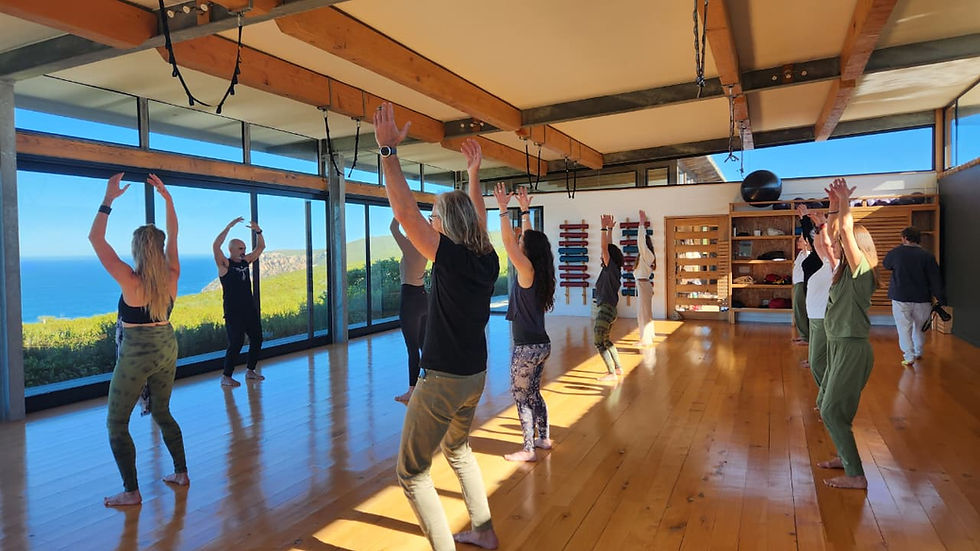Tension and Trauma Release by Kerrin Bain
- The Space Between
- Apr 7
- 3 min read

‘Just take a deep breath,’ were words that I heard from my mom many times during my teenage years and into adulthood. Even now, as I have realigned my life’s purpose and have tipped over the half century mark, she still can’t resist telling me to take that breath.
What I know now that I didn’t know then is that by taking that deep breath, I am calming my nervous system. I am shifting from a state of agitation and reaction in my sympathetic nervous system (often referred to as the ‘fight or flight’ response) to my calm and balanced parasympathetic nervous system. These are the two branches of the Autonomic Nervous System (ANS) which functions like our body’s automatic control centre. It is responsible for our essential functions; our heart rate, digestion and breathing. It is critical for maintaining balance in our body, allowing it to run smoothly whether we are resting or reacting to stress.
What are Tension and Trauma Release Exercises (TRE)?
TRE has been designed to help regulate the ANS by restoring balance and promoting relaxation and recovery. It was developed by Dr David Bercelli in response to humanitarian work in war-torn regions where he observed the physical and emotional effect of trauma.
During intense bombing in Lebanon, he observed a shared response to trauma— instinctive bracing. This observation led him to explore how the body stores tension and trauma and how neurogenic tremors could help release it. This shaped his understanding of trauma recovery which led to the development of TRE as a method to help people release deep muscular tension caused by stress and trauma, without the need for verbal processing. Like a tuning fork to our nervous system, TRE supports healing by regulating the stress hormones, cortisol and adrenaline.
What to expect from a TRE session
The session begins with simple physical movements (like stretching or controlled muscle fatigue) to gently activate the body's natural shaking mechanism. These exercises focus on areas where tension is commonly stored, the legs and hips.
Once the tremors begin, you’ll be encouraged to allow your body to shake naturally without forcing or controlling the movement. The shaking may start subtly and gradually intensify as deeper layers of tension are released. You will be guided to stay aware of your body’s responses and adjust as needed to ensure comfort. Towards the end of the session you will slow down and take a few moments to rest and integrate. Many people report feeling lighter, calmer and more relaxed, while others experience emotional shifts as stored tension is released.
Long-Term benefits
Regular TRE practice can help improve nervous system regulation, reduce anxiety and enhance resilience to stress. Over time, your body will become more efficient at releasing tension naturally, even outside of TRE sessions. This can ultimately restore your sense of safety.
My Story
My adult life has been a rollercoaster of love and loss and finding ways to restore balance and healing in a natural way has become an important part of my journey. I am a mom who has endured the unimaginable loss of my two daughters, Jess in 2008 and Georgie in 2019, to cancer.
I became a Coach and a TRE Practitioner as I believe that my life experiences, even the painful ones, can be a guiding light for others. If there is one truth I hold onto, it’s that no matter how dark the night, the sun will always rise again. Luckily for me, my journey of loss, love and life has led me to the ocean where I support others going through challenging times. For more information please visit my website www.kerrinbain.com or come join me for TRE at The Space Between.


